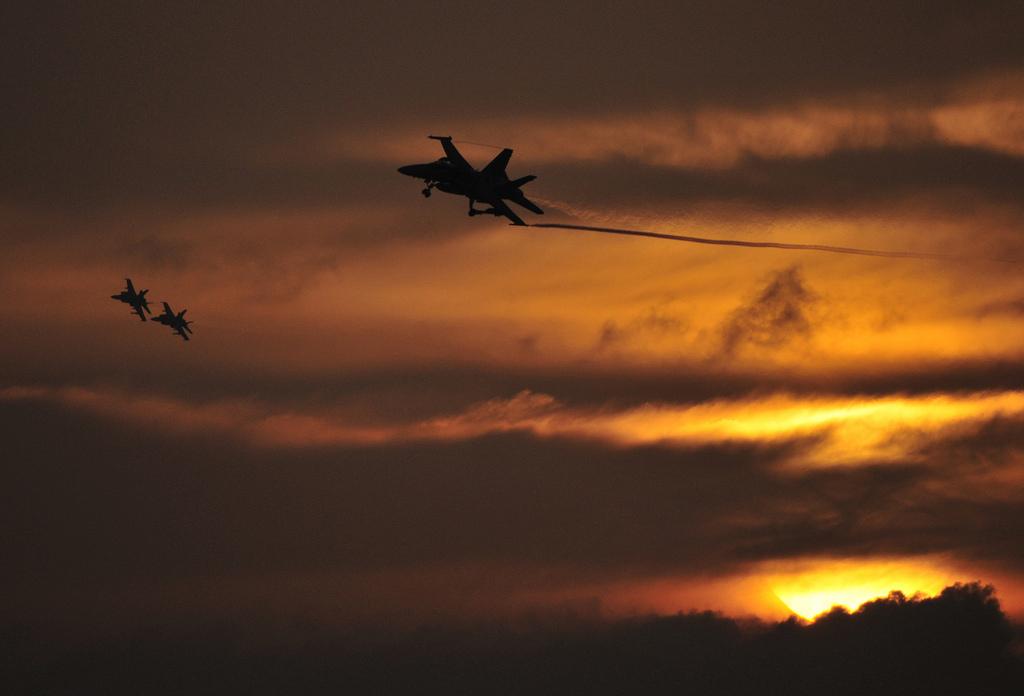
Last week, I identified some of the possible dilemmas for US conventional deterrence in East Asia, so it’s now worth looking in more detail what this might mean for Australia. At least four points can be made:
First, as the United States shifts its conventional deterrence strategy towards greater strategic depth in the Asia–Pacific and a greater reliance on long-range strike, Australia and Japan become much more important allies from an American perspective, for both political and geostrategic reasons. The recent CSIS report on the future American force posture in East Asia makes this amply clear. Using Australian airfields in the north for long-range strike provides US planners with additional options to complicate Chinese planning in the event of a major crisis. Indeed, in a future Asia–Pacific strategic order, Australia might become the latest in a line of America’s ‘unsinkable aircraft carriers.’ But this also means that in a future contested Asia–Pacific, Australia’s heightened relevance in US operational planning will make such installations a potential target of Chinese strikes in the event of a war. Burden-sharing within ANZUS will thus (again) take on a new quality, similar to the Cold War when Australian defence planners were worried about Soviet strikes against joint US–Australian facilities at Pine Gap and elsewhere. In that case, investing in defensive systems to prepare for such a scenario would move up the priority order of Defence’s core capabilities.
Second, the US military is already looking at options to strengthen its conventional deterrence by exploiting China’s geostrategic weaknesses. While China might be able to deny US carrier group freedom of manoeuvre in some parts of the Western Pacific, it won’t be able to exert sea control itself. And it certainly won’t be able to dominate its own sea lines of communication in Southeast Asia and the Indian Ocean for decades to come. Therefore, one key element of the new US AirSea Battle operational concept is threatening China with a ‘distant blockade’ of maritime chokepoints in Southeast Asia and parts of the Indian Ocean. Given Australia’s geostrategic location and the ADF’s planned modernisations of air and maritime capabilities, the US expects us to play a key role in this and (if this is not already happening) we need to have thorough discussion with Washington about the political, strategic and operational implications.
Third, over time China’s growing power projection capabilities will pose a similar dilemma for the US extended deterrence in Southeast Asia as in East Asia. Will Washington be willing to intervene in a territorial dispute between China and the Philippines or China and Vietnam? If so, what will it expect from its Australian ally? If not, will the regional strategic balance tip in favour of China or will its neighbours choose to balance by increasing their own military modernisation programs and by looking to secure the support of additional external players, including Australia? Obviously, Australia has a key strategic interest in preventing Southeast Asia from being dominated by a potentially hostile power. If the South China Sea becomes even more volatile than it already is (PDF), Australia might need to increase its strategic engagement to secure its interests. In this context, its long-standing commitment to the Five Powers Defence Arrangements (FDPA) could be used as a framework for increased air and maritime activities, including through forward-deployed strike aircraft.
Fourth, and finally, the shifts in US conventional extended deterrence provide an opportunity for Australia to reconsider its strategic relationship with Indonesia. Traditionally, Australian thinking about deterrence and force structure planning has been preoccupied by the possibility of an ‘Indonesian threat’. Indonesia’s remarkable economic development over the past few years have led my colleague Hugh White to already warn about the worst case scenario of a military conflict with a future ‘great power’ Indonesia. Notwithstanding questions as to whether Indonesia will really overcome massive obstacles on the way to becoming a regional great power and whether its current military modernisation follows a clear cut strategic logic of regional power projection, viewing Jakarta as a potential military threat hardly reflects the ‘radical rethink’ in our strategic relationship with our most important neighbour. Really, turning Indonesia into a ‘strategic partner’ would require significant adjustments in Australian strategic thinking and deterrent posture. As Natalie Sambhi said last week, let’s see if the next Defence White Paper can address that issue. The good news is that Australia’s growing importance in US extended deterrence posture provides a significant barrier to any regional country ever contemplating attacking us, including Indonesia.
The changing nature of US conventional extended deterrence in the Asia–Pacific region provides both opportunities and challenges for Australian strategic policy. Australia’s increased strategic value to the US means that, unlike other Asia–Pacific countries, we won’t have to worry about a possible abandonment. America won’t retreat from its defence commitments, now or in the foreseeable future. At the same time, Washington will expect more from its Australian ally in a future deterrence strategy that relies more on military activities in waters much closer to us. Moreover, Australia needs to think about its future strategic role in Southeast Asia. Waiting for somebody to cross the ‘Air-Sea gap’ won’t be enough.
Benjamin Schreer is deputy head of the Strategic and Defence Studies Centre at the Australian National University. Image courtesy of Flickr user Official US Navy Imagery.